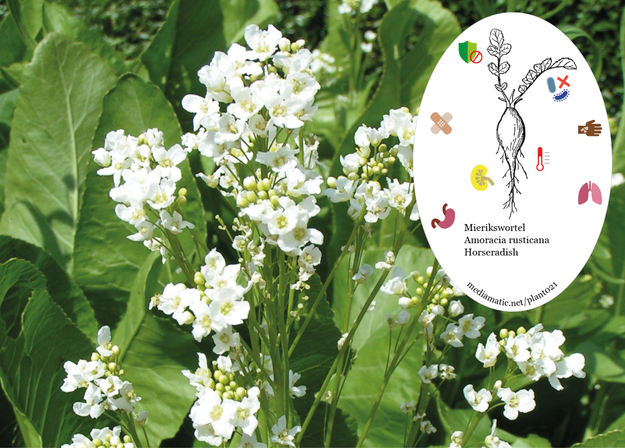Horseradish is a very pungent stimulant herb that controls bacterial infections and can be used both internally and externally. The plant is a powerful stimulant, whether used internally as a spur for the digestive system or externally as a rubefacient. It should not be used internally by people with stomach ulcers or thyroid problems. The roots are antiseptic, aperient, digestive, diuretic, expectorant, rubefacient and stimulant. They should be used in their fresh state. An infusion is used in the treatment of colds, fevers and flu and is of value in the treatment of respiratory and urinary tract infections. A sandwich of the freshly grated root is a traditional remedy for hay fever. A tea made from the root is weakly diuretic, antiseptic and expectorant. The plant is antibiotic against gram-negative and gram-positive bacteria and also pathogenic fungi. It is experimentally antitumor. Externally, a poultice made from the roots is used to treat pleurisy, arthritis and infected wounds[238]. It will also relieve the pain of chilblains. Some caution should be employed, however, because it can cause blistering. The German Commission E Monographs, a therapeutic guide to herbal medicine, approve Armoracia rusticana for internal & external use in catarrhs of the respiratory tract, internally as supportive therapy for urinary tract infections, externally for the hyperaemic treatment of minor muscles aches. Source: https://pfaf.org/
Horseradish
Armoracia rusticana
Find more about this plant on Wikipedia.
